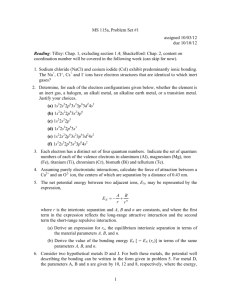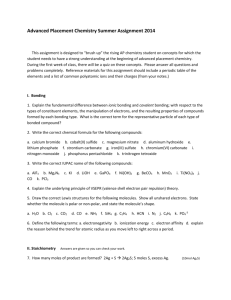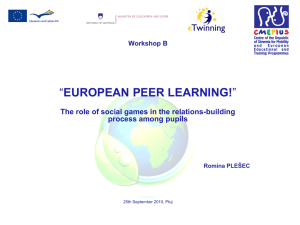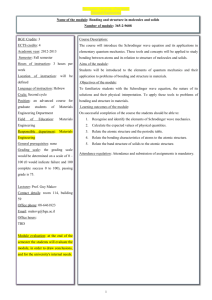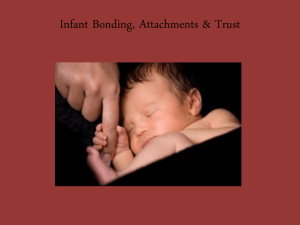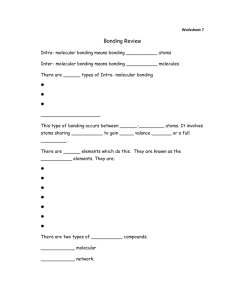Abstract Title
advertisement
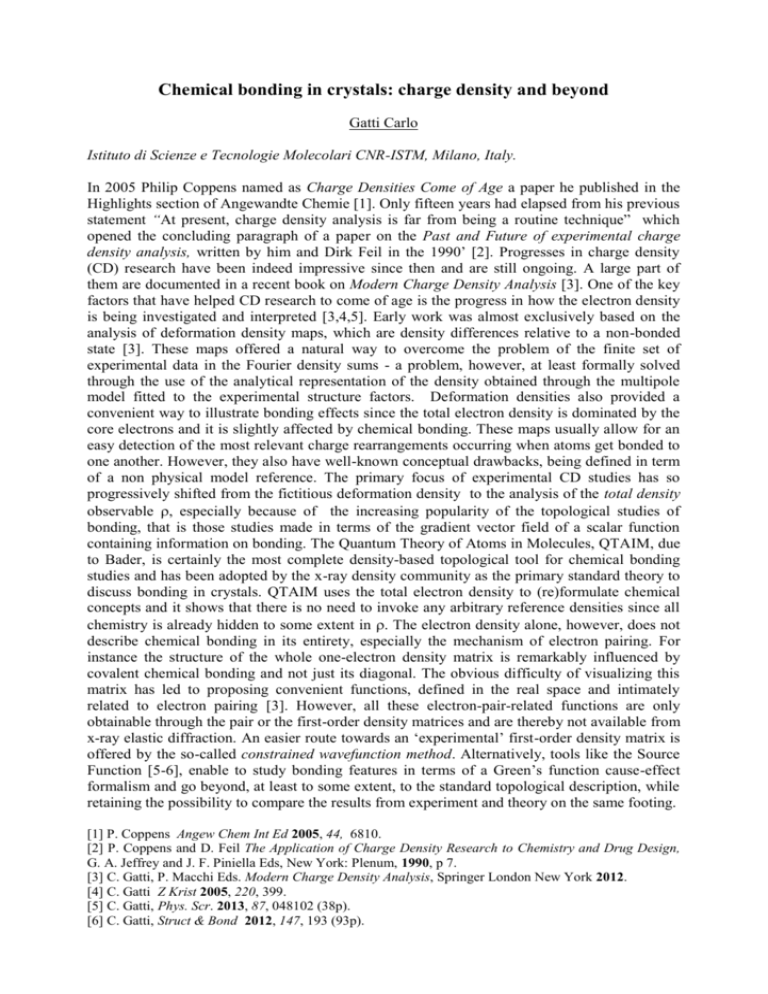
Chemical bonding in crystals: charge density and beyond Gatti Carlo Istituto di Scienze e Tecnologie Molecolari CNR-ISTM, Milano, Italy. In 2005 Philip Coppens named as Charge Densities Come of Age a paper he published in the Highlights section of Angewandte Chemie [1]. Only fifteen years had elapsed from his previous statement “At present, charge density analysis is far from being a routine technique” which opened the concluding paragraph of a paper on the Past and Future of experimental charge density analysis, written by him and Dirk Feil in the 1990’ [2]. Progresses in charge density (CD) research have been indeed impressive since then and are still ongoing. A large part of them are documented in a recent book on Modern Charge Density Analysis [3]. One of the key factors that have helped CD research to come of age is the progress in how the electron density is being investigated and interpreted [3,4,5]. Early work was almost exclusively based on the analysis of deformation density maps, which are density differences relative to a non-bonded state [3]. These maps offered a natural way to overcome the problem of the finite set of experimental data in the Fourier density sums - a problem, however, at least formally solved through the use of the analytical representation of the density obtained through the multipole model fitted to the experimental structure factors. Deformation densities also provided a convenient way to illustrate bonding effects since the total electron density is dominated by the core electrons and it is slightly affected by chemical bonding. These maps usually allow for an easy detection of the most relevant charge rearrangements occurring when atoms get bonded to one another. However, they also have well-known conceptual drawbacks, being defined in term of a non physical model reference. The primary focus of experimental CD studies has so progressively shifted from the fictitious deformation density to the analysis of the total density observable , especially because of the increasing popularity of the topological studies of bonding, that is those studies made in terms of the gradient vector field of a scalar function containing information on bonding. The Quantum Theory of Atoms in Molecules, QTAIM, due to Bader, is certainly the most complete density-based topological tool for chemical bonding studies and has been adopted by the x-ray density community as the primary standard theory to discuss bonding in crystals. QTAIM uses the total electron density to (re)formulate chemical concepts and it shows that there is no need to invoke any arbitrary reference densities since all chemistry is already hidden to some extent in . The electron density alone, however, does not describe chemical bonding in its entirety, especially the mechanism of electron pairing. For instance the structure of the whole one-electron density matrix is remarkably influenced by covalent chemical bonding and not just its diagonal. The obvious difficulty of visualizing this matrix has led to proposing convenient functions, defined in the real space and intimately related to electron pairing [3]. However, all these electron-pair-related functions are only obtainable through the pair or the first-order density matrices and are thereby not available from x-ray elastic diffraction. An easier route towards an ‘experimental’ first-order density matrix is offered by the so-called constrained wavefunction method. Alternatively, tools like the Source Function [5-6], enable to study bonding features in terms of a Green’s function cause-effect formalism and go beyond, at least to some extent, to the standard topological description, while retaining the possibility to compare the results from experiment and theory on the same footing. [1] P. Coppens Angew Chem Int Ed 2005, 44, 6810. [2] P. Coppens and D. Feil The Application of Charge Density Research to Chemistry and Drug Design, G. A. Jeffrey and J. F. Piniella Eds, New York: Plenum, 1990, p 7. [3] C. Gatti, P. Macchi Eds. Modern Charge Density Analysis, Springer London New York 2012. [4] C. Gatti Z Krist 2005, 220, 399. [5] C. Gatti, Phys. Scr. 2013, 87, 048102 (38p). [6] C. Gatti, Struct & Bond 2012, 147, 193 (93p).
